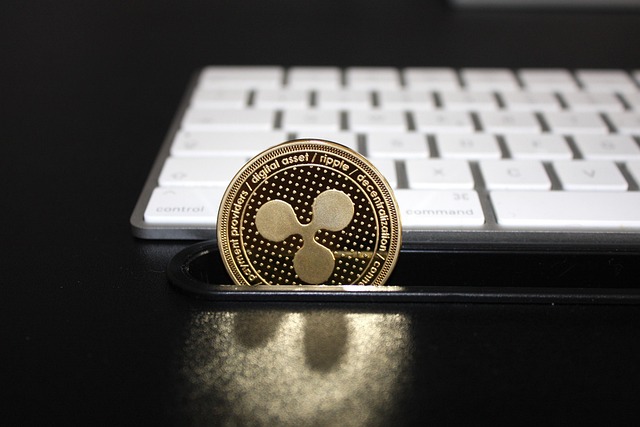South Korean crypto market awaits institutional activity as retail goes risk-off

The South Korean crypto market reflected the shifting sentiment in Q1. The retail-driven market may soon start to invite institutions, based on the latest Kaiko report.
The South Korean crypto market slowed down in the first quarter of 2025, reflecting the general trend on other global centralized exchanges. The country’s markets rallied hard at the end of 2024, reaching a peak of $300M in daily volumes, per the latest Kaiko report. However, the first months of 2025 cooled down the enthusiasm.
The South Korean crypto market usually served as an arena for some of the hottest altcoins. The country’s exchanges are relatively conservative in listing new coins and tokens, but often revive older assets with KRW liquidity.

Since December 2025, the South Korean crypto market has seen a series of setbacks. Starting with the martial law crisis, the markets shifted sentiments. The new year also arrived with challenges linked to the global trading war and the reciprocal tariffs proposed by the USA.
South Korean crypto markets decrease fiat liquidity
The South Korean crypto markets mostly rely on centralized exchanges, forming pairs against the Korean won. The relatively low usage of stablecoins also means price discovery is different on the country’s top exchanges, often leading to premium prices.
The Korean won accounts for up to 37% of global fiat-to-crypto trading, down from 40% on average for 2024. The country’s currency is shifting the overall balance of fiat liquidity away from the dollarized crypto economy.
The stricter requirements for fiat-to-crypto trading also make the country a limited market where only the biggest exchanges can survive. Upbit remains the leader, with around 70% share of all volumes. Bithumb expanded its share to around 28%, but smaller markets are unable to compete with the entrenched leaders.
Upbit surpassed other exchanges like KuCoin and Kraken, reaching $300B in volumes for Q1. Despite this, the South Korean crypto sector did not benefit as much from the US-based rally. The market share of South Korean crypto platforms fell from 7% to 3%, due to the expansion of US-based trading. Factors specific to South Korea erased some of the effects of the post-election rally between November 2024 and March 2025.
The South Korean market may see institutional participants
South Korean exchanges are tailored for retail players and heavily focused on altcoins, which make up to 85% of trading volumes. Some of the specific assets like WEMIX and WAVES predominantly rely on Upbit and other markets, losing liquidity elsewhere.
After the December martial law crisis, South Korean investors switched to Bitcoin (BTC) due to the inherent risks of altcoins. During turbulent times, traders also quickly abandon stablecoins, switching to fiat as the safest option.
The biggest change for the market can come from regulators, who may let institutions trade digital assets. The country’s exchanges often sport listing premiums or an almost-constant BTC premium, though with a lower market depth. The addition of bigger traders can change the market profile and increase liquidity.
For BTC, South Korean trading had a volume-to-liquidity ratio of 200, meaning the daily volumes exceeded available liquidity several times over.
Cryptopolitan Academy: Tired of market swings? Learn how DeFi can help you build steady passive income. Register Now
South Korean crypto market awaits institutional activity as retail goes risk-off

The South Korean crypto market reflected the shifting sentiment in Q1. The retail-driven market may soon start to invite institutions, based on the latest Kaiko report.
The South Korean crypto market slowed down in the first quarter of 2025, reflecting the general trend on other global centralized exchanges. The country’s markets rallied hard at the end of 2024, reaching a peak of $300M in daily volumes, per the latest Kaiko report. However, the first months of 2025 cooled down the enthusiasm.
The South Korean crypto market usually served as an arena for some of the hottest altcoins. The country’s exchanges are relatively conservative in listing new coins and tokens, but often revive older assets with KRW liquidity.

Since December 2025, the South Korean crypto market has seen a series of setbacks. Starting with the martial law crisis, the markets shifted sentiments. The new year also arrived with challenges linked to the global trading war and the reciprocal tariffs proposed by the USA.
South Korean crypto markets decrease fiat liquidity
The South Korean crypto markets mostly rely on centralized exchanges, forming pairs against the Korean won. The relatively low usage of stablecoins also means price discovery is different on the country’s top exchanges, often leading to premium prices.
The Korean won accounts for up to 37% of global fiat-to-crypto trading, down from 40% on average for 2024. The country’s currency is shifting the overall balance of fiat liquidity away from the dollarized crypto economy.
The stricter requirements for fiat-to-crypto trading also make the country a limited market where only the biggest exchanges can survive. Upbit remains the leader, with around 70% share of all volumes. Bithumb expanded its share to around 28%, but smaller markets are unable to compete with the entrenched leaders.
Upbit surpassed other exchanges like KuCoin and Kraken, reaching $300B in volumes for Q1. Despite this, the South Korean crypto sector did not benefit as much from the US-based rally. The market share of South Korean crypto platforms fell from 7% to 3%, due to the expansion of US-based trading. Factors specific to South Korea erased some of the effects of the post-election rally between November 2024 and March 2025.
The South Korean market may see institutional participants
South Korean exchanges are tailored for retail players and heavily focused on altcoins, which make up to 85% of trading volumes. Some of the specific assets like WEMIX and WAVES predominantly rely on Upbit and other markets, losing liquidity elsewhere.
After the December martial law crisis, South Korean investors switched to Bitcoin (BTC) due to the inherent risks of altcoins. During turbulent times, traders also quickly abandon stablecoins, switching to fiat as the safest option.
The biggest change for the market can come from regulators, who may let institutions trade digital assets. The country’s exchanges often sport listing premiums or an almost-constant BTC premium, though with a lower market depth. The addition of bigger traders can change the market profile and increase liquidity.
For BTC, South Korean trading had a volume-to-liquidity ratio of 200, meaning the daily volumes exceeded available liquidity several times over.
Cryptopolitan Academy: Tired of market swings? Learn how DeFi can help you build steady passive income. Register Now

